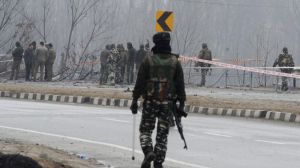Who really owns Mother Teresa?
October 19 is the day the Roman Catholic Church will mark the beatification of Ganxhe Agnes Bojaxhiu, the Albanian woman known to the world ...

October 19 is the day the Roman Catholic Church will mark the beatification of Ganxhe Agnes Bojaxhiu, the Albanian woman known to the world as Mother Teresa. Beatification is the last step before canonisation, or sainthood, and the occasion is one of celebration for Catholics around the world. Others should celebrate with equal fervor. Mother Teresa offered an exceptional example of self-sacrifice for the betterment of others. The vocation of her Missionaries of Charity is to care for the poorest of the poor. But Mother Teresa’s beatification has provoked a bizarre controversy in the city of her birth, where two ethnic factions are fighting to claim her.
Impenetrable though it may seem to outsiders, this little uproar illustrates the enduring bad blood between Slavs and Albanians — and shows why American peacekeepers, though they may soon be withdrawn from Bosnia-Herzegovina, must remain in Kosovo. Mother Teresa was born in 1910 in the 2,000-year-old city of Skopje, then part of the Ottoman Empire. Today, Skopje is the capital of the Republic of Macedonia, a statelet of 2 million people that gained its independence in 1991 with the breakup of Yugoslavia… Macedonia — for which the French and Italians named a salad combining many vegetables or fruits chopped into little pieces — is nothing if not Balkanised. Its population is roughly 60 per cent Slavs, most of them Orthodox Christians, some of them Muslims; and 40 per cent other, of whom most are ethnic Albanians, most of them Muslims, about a fifth Roman Catholics, a few Orthodox…
Mother Teresa came from an old Catholic Albanian family, in a part of the world that was Albanian before it was Slav, and Christian long before it was Muslim. But late last summer, Macedonian Slavs began to question her ethnic identity, maintaining she was a Slav or even a Serb — anything but Albanian. This exercise in celebrity ethnic cleansing came to a head in the plan to donate a statue of Ganxhe Agnes Bojaxhiu to the city of Rome, a copy of a statue already standing in Skopje. The inscription would identify Mother Teresa as a ‘‘daughter of Macedonia’’ in the Cyrillic script used by Macedonian Slavs. The Albanian language is written in the Latin alphabet.
(Excerpted from an article by Stephen Schwartz in the October 27 issue of ‘The Weekly Standard’)
Photos





- 01
- 02
- 03
- 04
- 05


























